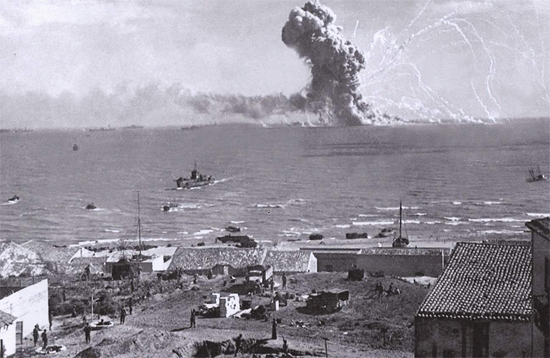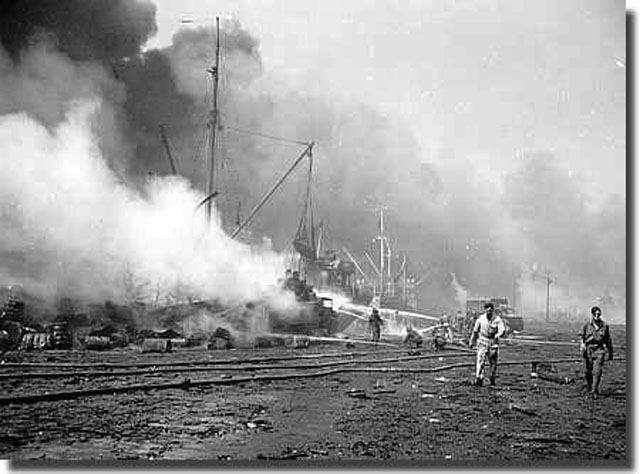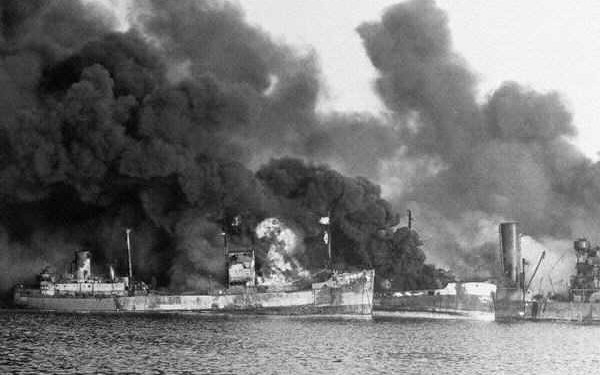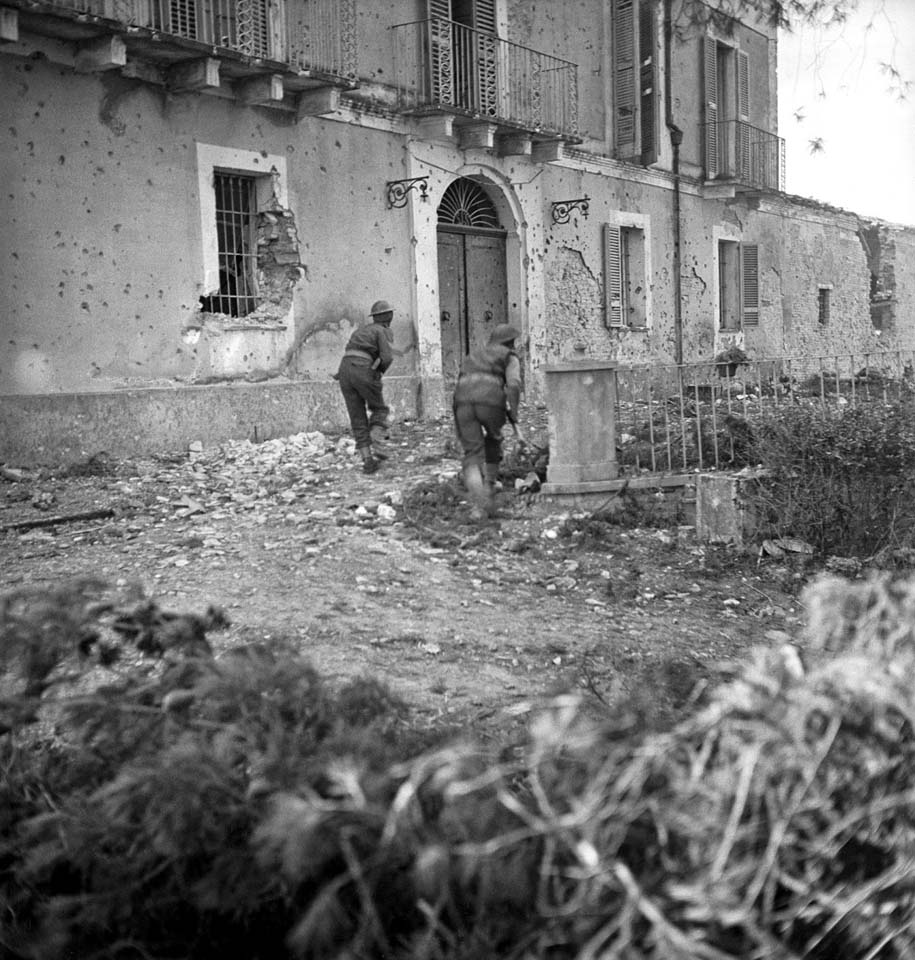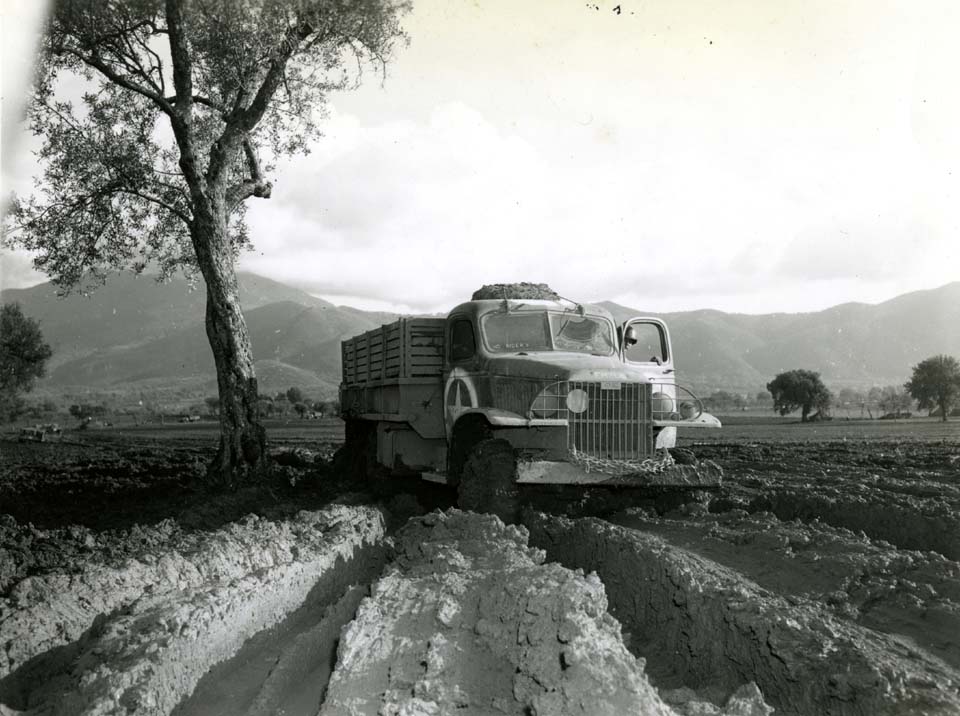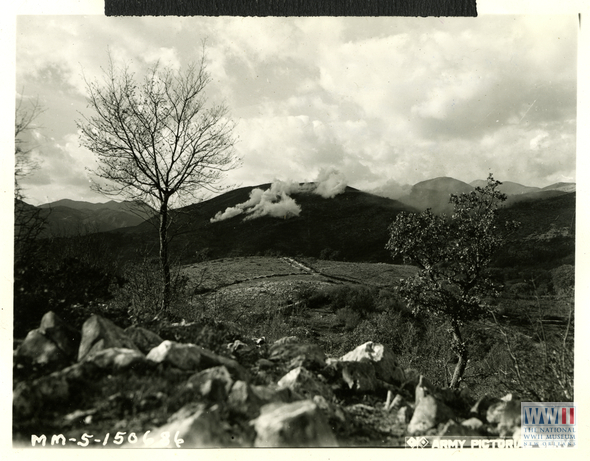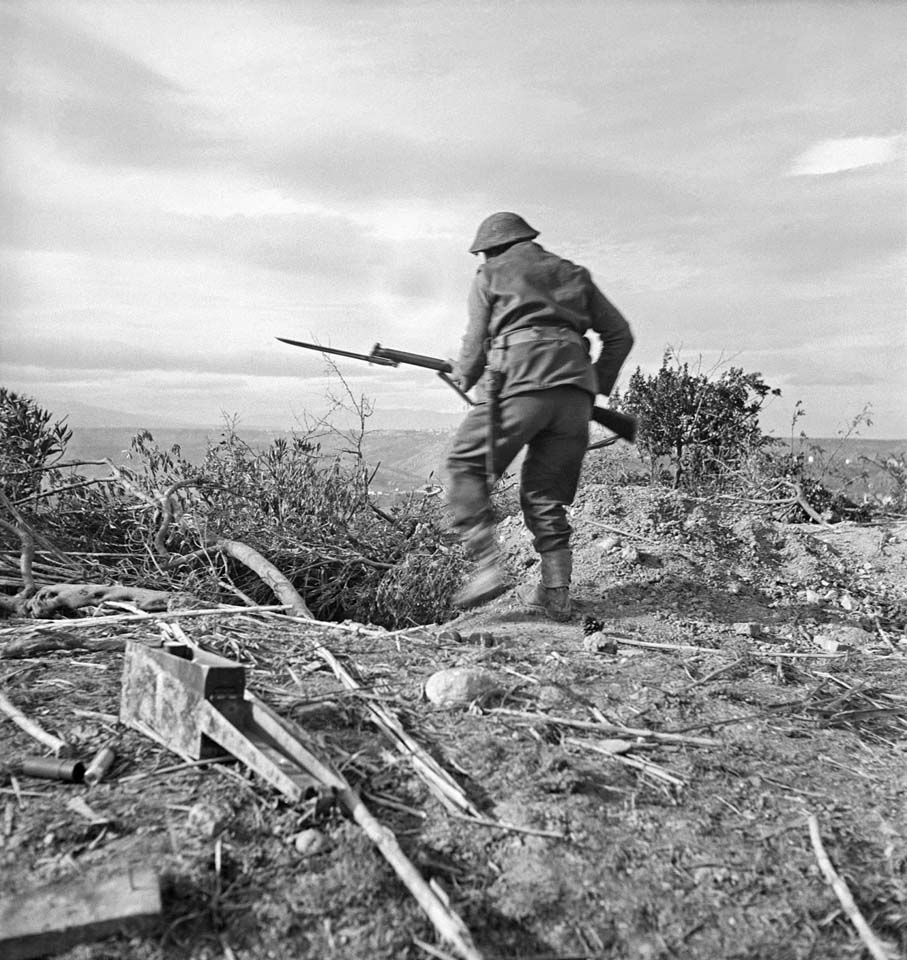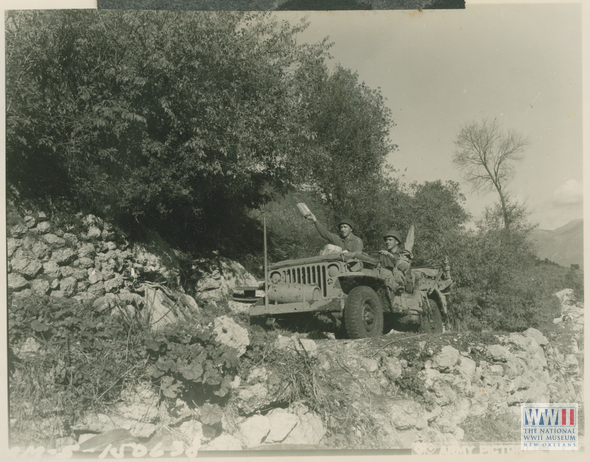Air Operations, Bismarcks
More than 50 V Bomber Command B-25s attack the Borgen Bay area.
[Air Operations, CBI
CHINA- 18 Japanese bombers, escorted by A6M Zeros, attack the airfield at Suichwan.
- 16 14th Air Force P-40 fighter-bombers attack Japanese Army ground positions near Changte. 6 P-40s attack several occupied villages.
- 76th Fighter Squadron P-40s down a Ki-45 'Nick' fighter and an A6M Zero over the Suichwan airfield during the early afternoon. 2 P-40s are lost.
Air Operations, Europe
RAF BOMBER COMMANDBattle of Berlin
- 458 planes, including 425 Lancasters, 15 Halifaxes and 18 Mosquitoes, are sent to Berlin. 43 planes abort. The time over the target is 20:04-20:24. About 1,600 tons of bombs are dropped which include 840 tons of high explosives and 760 tons of incendiaries. The bombing at the target is a failure. Bad weather along the way causes many of the planes to arrive late. Variable winds push the planes south of the planned track. The Pathfinders misread their radar for the 3 small towns that would put them on target. They are actually 15 miles south of their intended position. German night fighters are given priority over the target area. The usual elements of a Wild Boar operation are present: searchlights, fighter flares and many combats. The bombing results of the raid are negligible. About three-fourths of the bomb loads fall in open country south of Berlin. There is some scattered damage in various parts of the city with between 100 and 150 people reportedly killed.
- A total of 40 aircraft are lost including 37 Lancasters, 2 Halifaxes and 1 Mosquito. Aircrew casualties are 228 killed, 60 POWs and 2 evaders among which are 2 war correspondents killed and 1 taken prisoner.
- During the night 30 German bombers attack Bari. An ammunition ship in the harbor is hit and explodes, sinking 18 transports of 70,000 tons and destroying 38,000 tons of supplies. Among the ships that were sunk is the liberty ship SS John Harvey carrying mustard gas bombs. Over 1,000 people are killed and 800 are injured. Thousands of civilians flee. The port is rendered useless for 3 weeks.
ITALY:
- XII Air Support Command B-25s attack bridges and bridge approaches.
- NATAF fighters and fighter-bombers attack gun emplacements, trains, and motor vehicles in and around the battle area.
- 12th Air Force Fighters attack harbors and shipping at several points along the coast.
FRANCE:
- 118 15th Air Force B-24s, escorted by 82nd Fighter Group P-38s, attack a marshalling yard at Bolzano with 106 tons of bombs. Rolling stock and tracks are severely damaged. P-38s down 4 of 33 Luftwaffe fighters that attack the formation.
- 3 P-38s are lost
- 15th Air Force B-26s attack a marshalling yard at Arezzo, the town area at Orvieto, and a rail bridge.
- NATAF aircraft provide direct support to Allied ground forces.
Air Operations, New Guinea
2 V Bomber Command B-24s attack the Sio area. 20 B-25s and B-26s attack Japanese Army ground troops around Finschhafen.
[Air Operations, Solomons
More than 20 XIII Bomber Command B-24s attack Korovo and more than 20 42nd Medium Bomb Group B-25s attack Malai and targets near Kieta.
[Allied Planning
The CCS outlines a plan for the defeat of Japan. MacArthur's forces in the Southwest Pacific Area will advance along the north coast of New Guinea to capture the Vogelkop Peninsula by August 1944. Nimitz's Central Pacific forces will capture islands in the Marianas for use as bomber bases for the strategic attack on the Japanese home islands. Guam, Saipan, and Tinian are specific targets and will be captured by October 1944, with bombing operations beginning in December of 1944. The British will move into upper Burma to open the overland supply route to China to improve logistics support for US air operations in China.
[Britain, Home Front
Minister of Labor Ernest Bevin announces conscription to mines.
[Eastern Front
Following up their advance in the area of the lower Dniepr, the Russians cross the Ingulech River and get within 6 miles of Znamenka, southwest of Kremenchug.
SOUTHERN SECTORThe 5th Guards Tank Army advance to within 6 miles of Znamenka but becomes embroiled in fierce fighting with the XI Corps on the right wing of the German 8th Army.
[Germany, Home Front
Hitler calls on younger Germans to enlist in the military, with the minimum age eventually reduced to 15.
[Italy
While the attack on Calabritto fails, the British 56th Division of the X Corps launches its attack on Monte Camino from the south at nightfall. A 650-gun barrage heralds a great 5th Army push in central Italy. The line moves forward about 3 kilometers. The newly arrived US II Corps under Gen Geoffrey Keyes moves in on Monte Camino from the northeast. In the The US VI Corps sector the 45th Division pushes forward to the right of these attacks toward La Bandita and the 34th toward Monte Pantano. They both encounter stubborn resistance. In the east New Zealand troops of V Corps capture Lanciano and Castelfrentano.
[New Guinea
On the Huon Peninsula the Australian captures Huanko.
[Images from December 2, 1943
|
|
|
|
|
|
|
|
